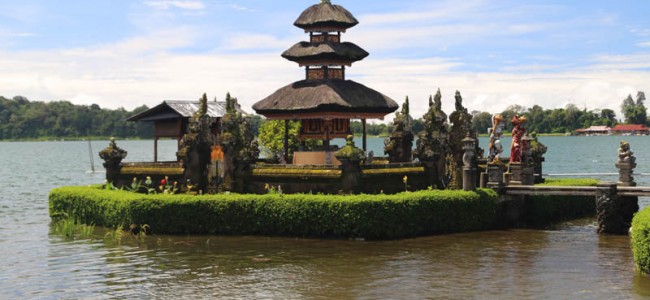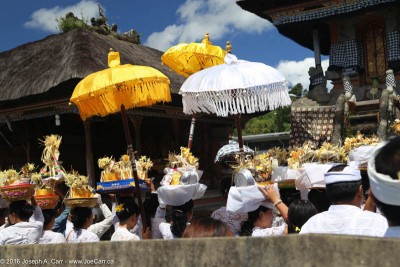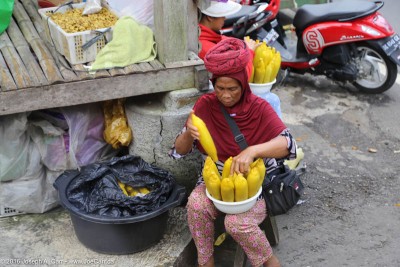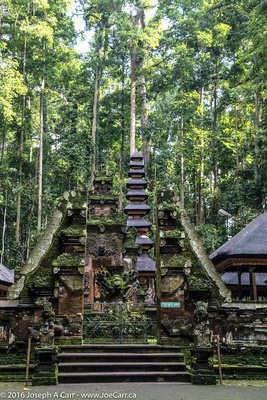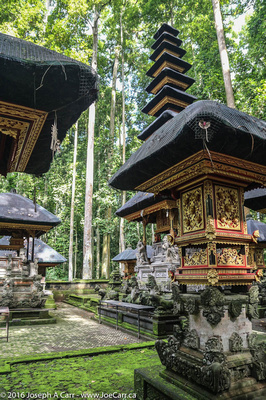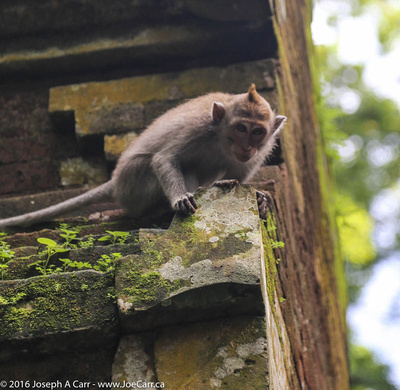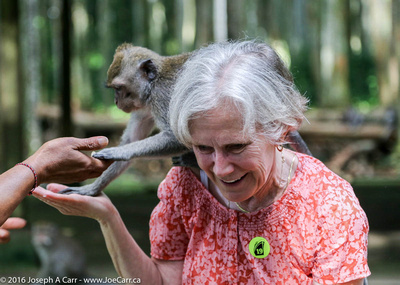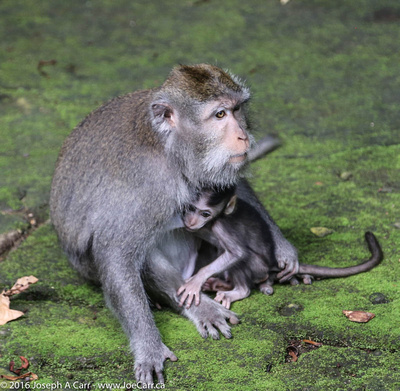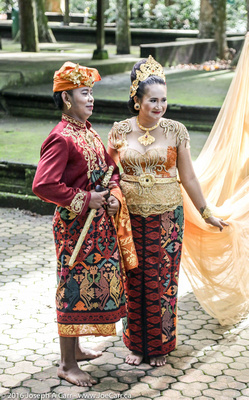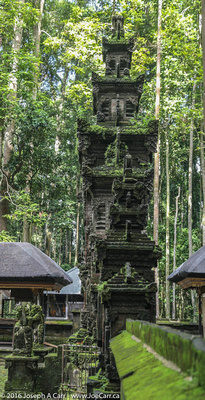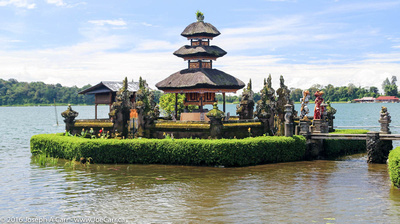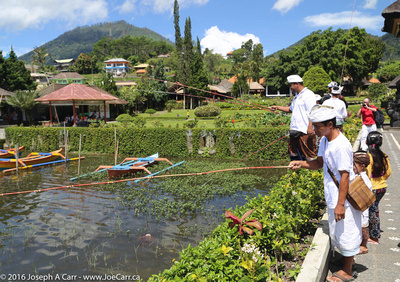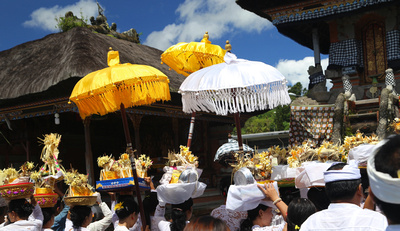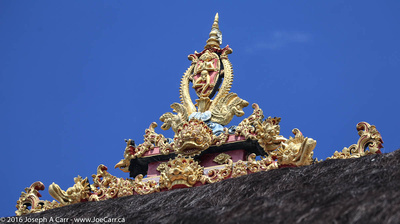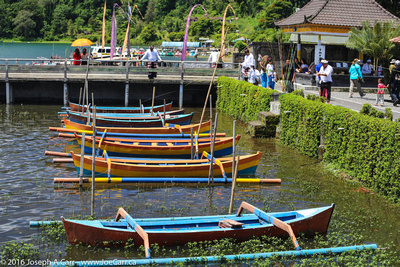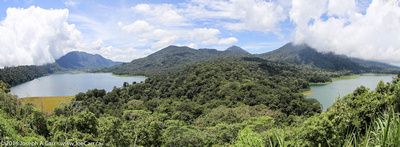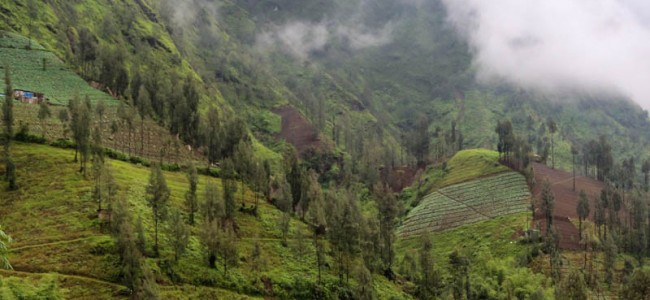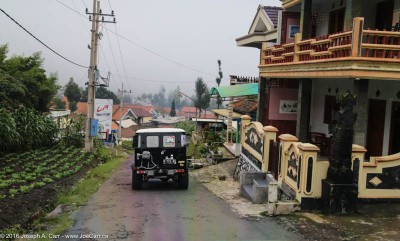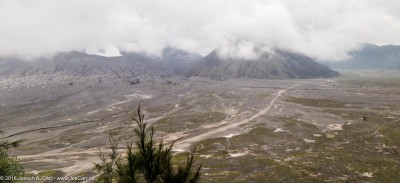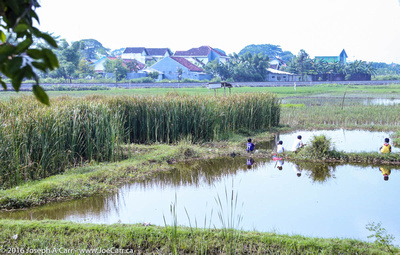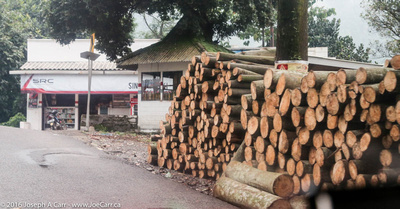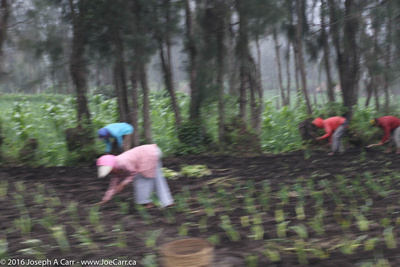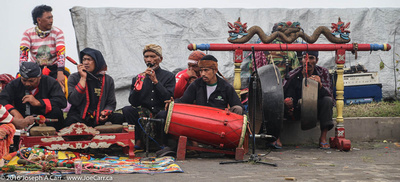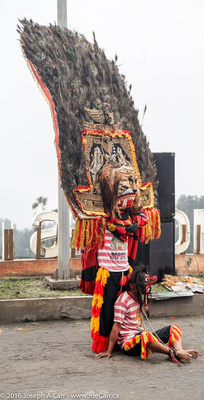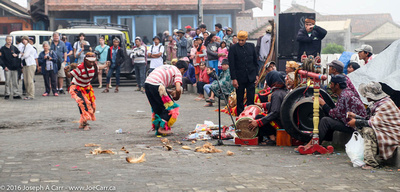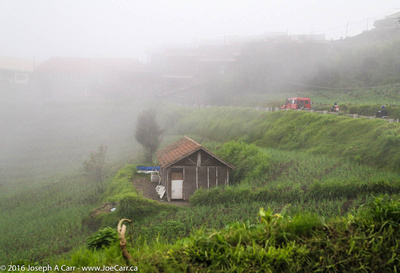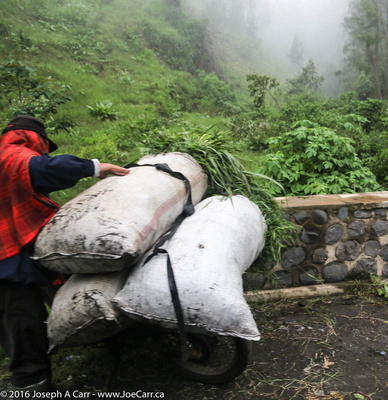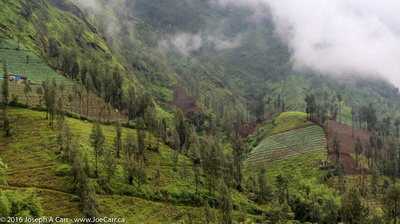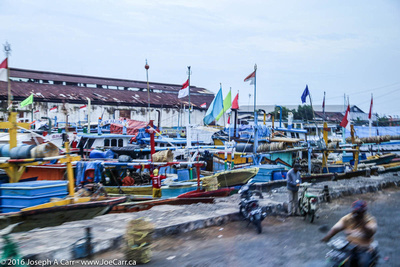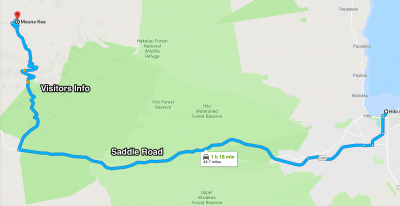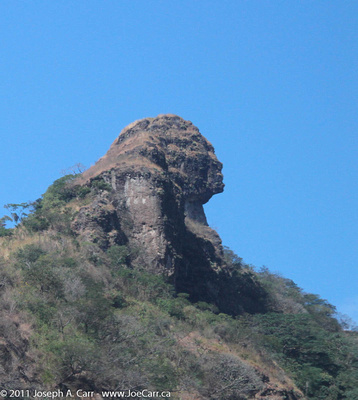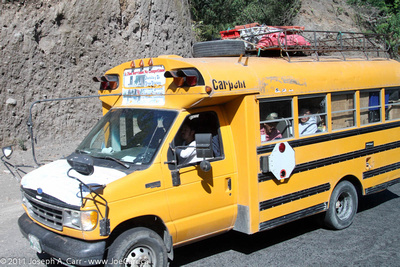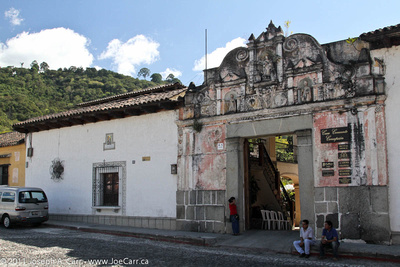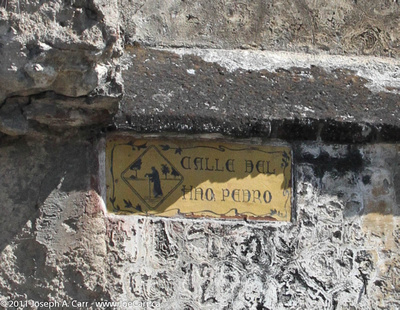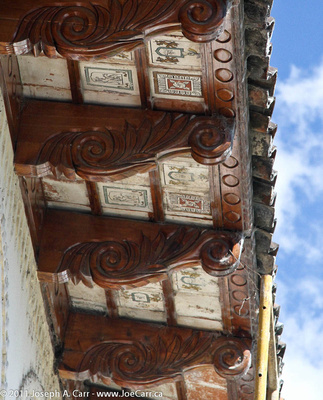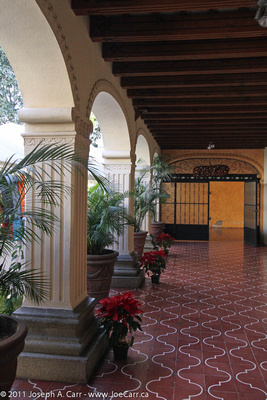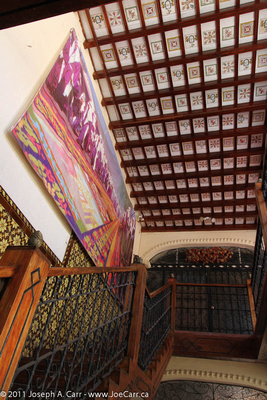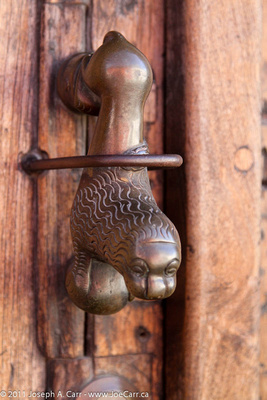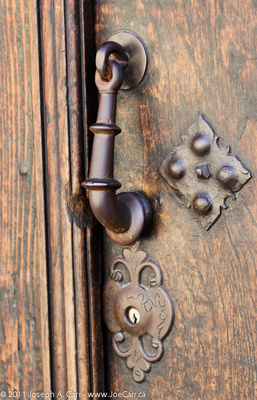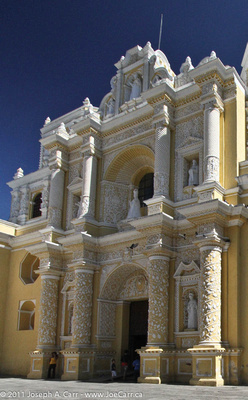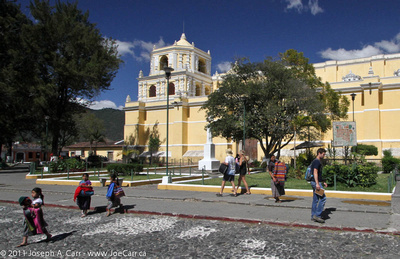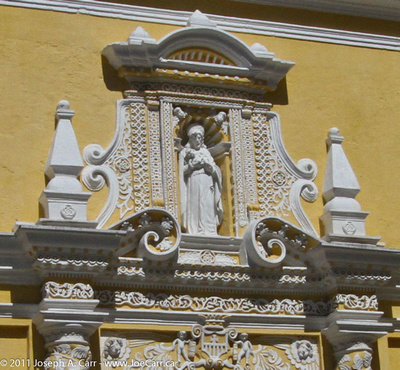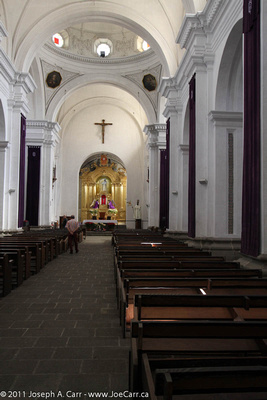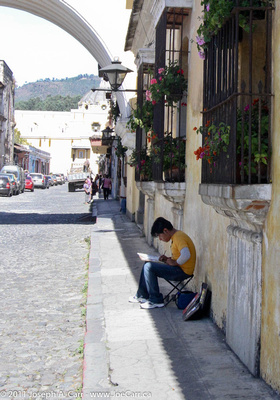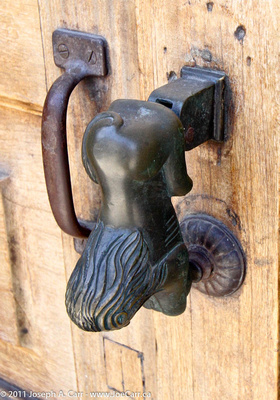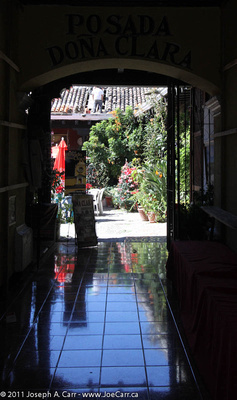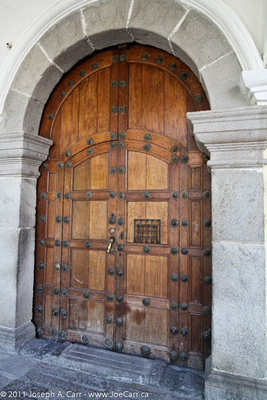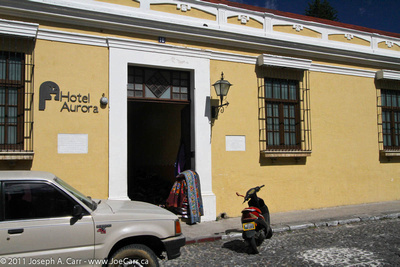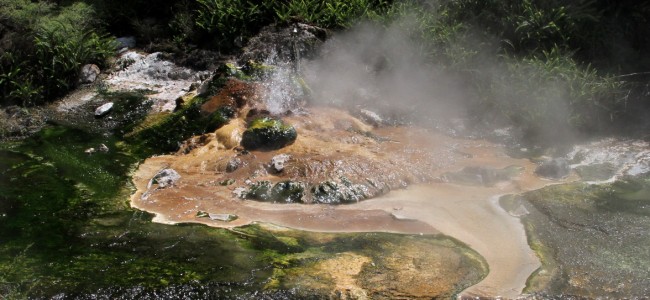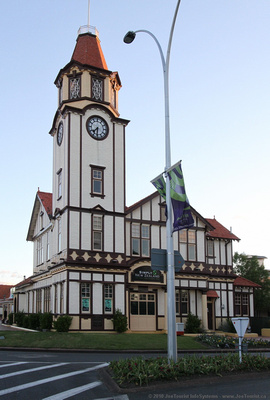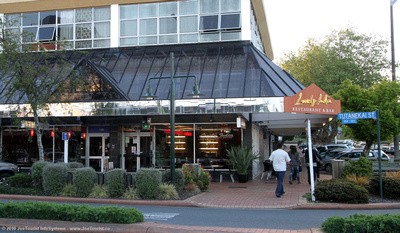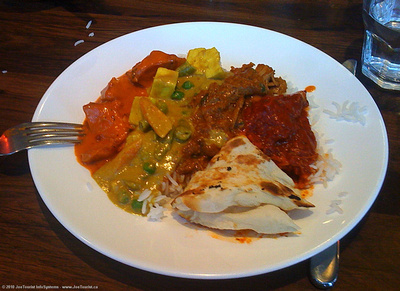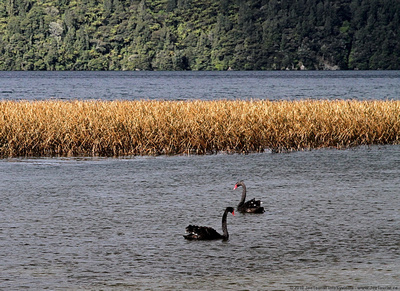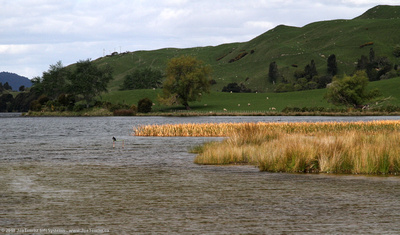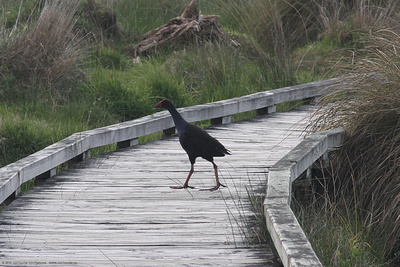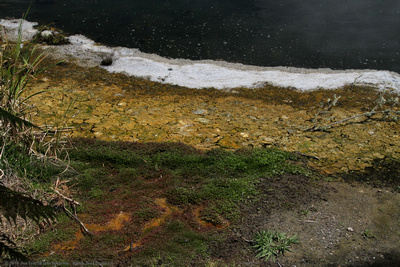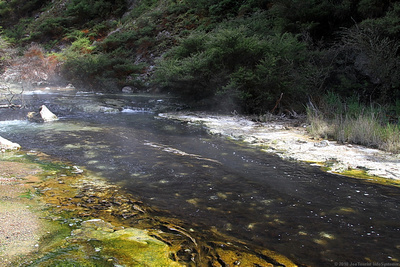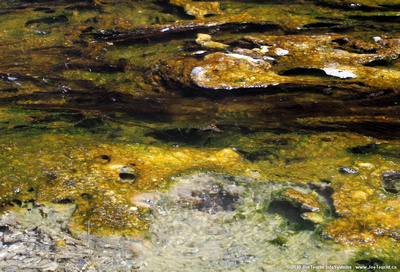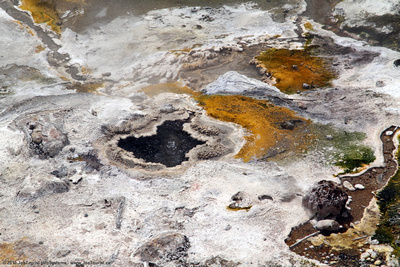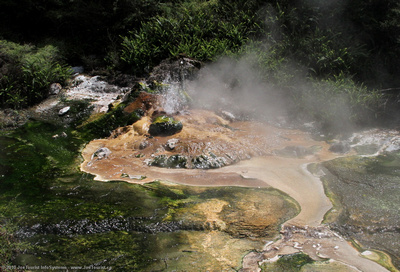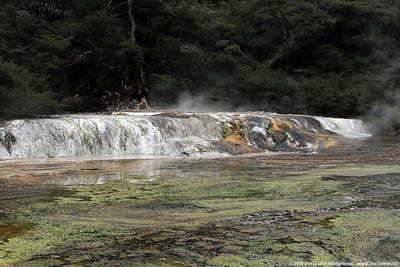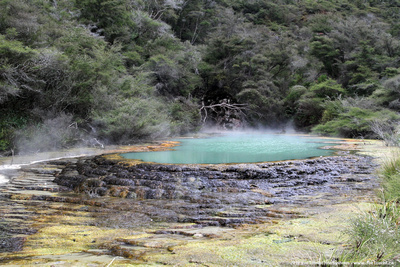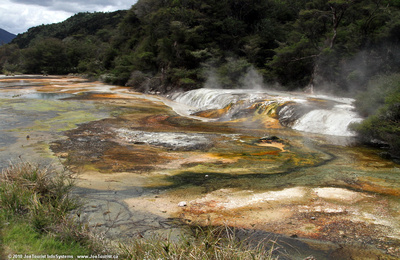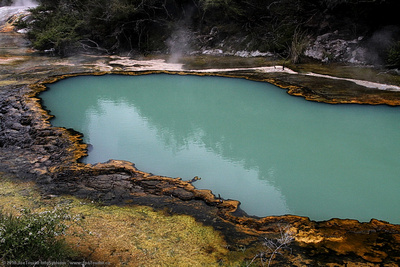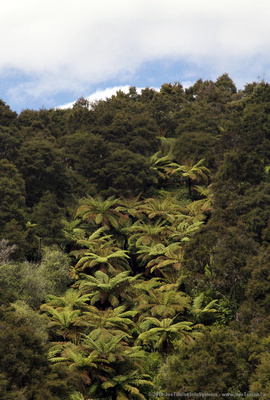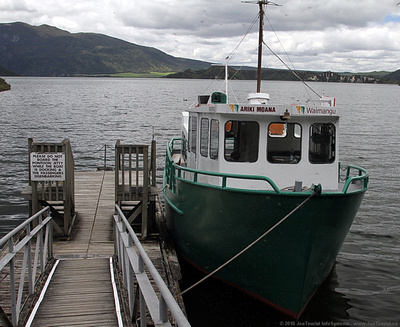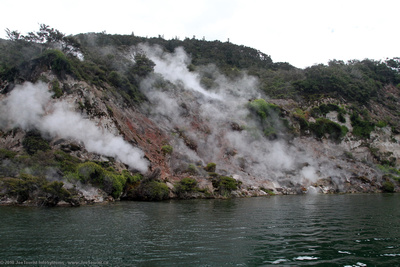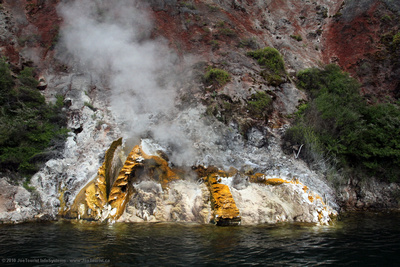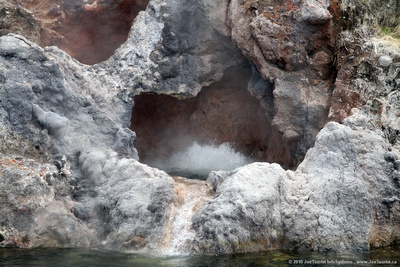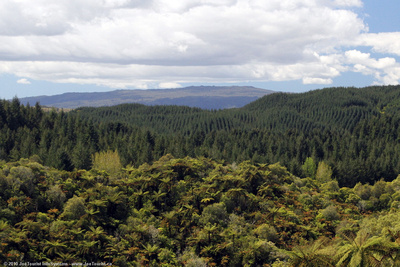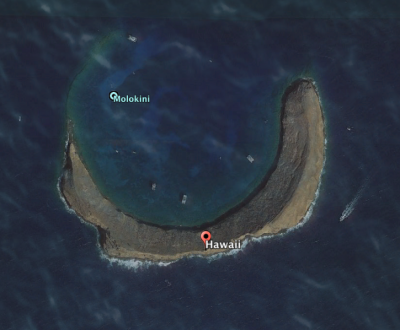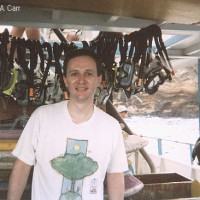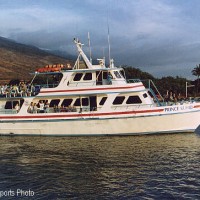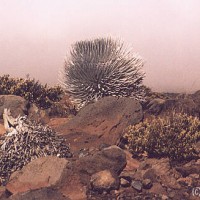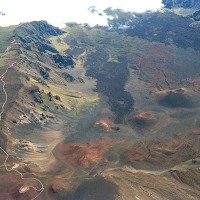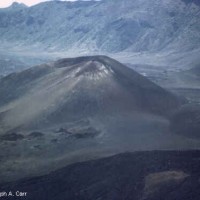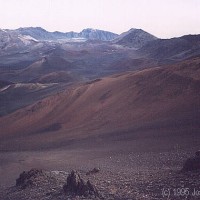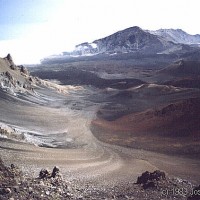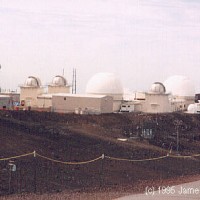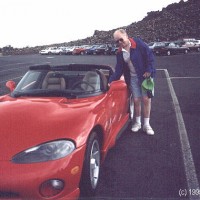March 13, 2016 – Benoa, Bali, Indonesia
2016 – SE Asia and Total Solar Eclipse cruise
I leave early this morning on the all-day Munduk Highlands tour of Bali. I deliberately chose this excursion awhile ago since it gets me away from the hot and humid coastal area. We drive out of the port of Benoa upcountry to the Sangeh monkey forest, with its towering nutmeg trees and temples. We watch dozens of resident Long-tailed Macaque monkeys frolic along the pathways. Some jump on tour group members, however they are much more friendly, gentle and well-behaved than monkeys in other areas. The cool of the shade in this place is wonderful. A couple of Balinese actors show up in full costume for us to take photos of. What a great touch!
We continue climbing up into the mountainous area of Bedugul to see the Lake Bratan area at 1,200 metres (4,000 feet) above sea level in the crater of Mt Catur. The Pura Ulun Danu temple is located along the lake shore, dedicated to the lake’s water goddess. While visiting the temple, we see local Balinese people in a funerary parade, and others are praying in the nearby temple. Decorative statues on the lakeshore are amazingly picturesque, as is the scenery in this old volcano. The climate is a bit cooler than the seaside areas of Bali, and yet the Sun is out.
We climb to the ridge line of the mountains and see the twin lakes of Buyan and Tamblingan, which are two of the largest lakes on the island. After taking a few photos, we descend a bit to have a nice buffet lunch at the Bali Handara Country Club, a local golf course with a view of one of the lakes.
En route back to the port, we stop at a so-called local fruit and vegetable market, but it appears to be mainly a shopping stop for tourists to buy t-shirts and other souvenirs. I stay on the bus, as do several others. There are peanuts, corn, and other food being sold to the local people as they drive by on the road.
While I’m away on my excursion, the ship leaves port around Noon, and anchors out in the bay due to tides being unfavourable for our proposed departure time of about 6PM. When my excursion returns to the pier, there are several hundred passengers waiting for tenders. Apparently the currents are too strong for the ship’s tenders, so the ship has contracted with two larger and more powerful tenders to move passengers back to the ship. The operation is slow and excruciating for us as we wait in the heat and humidity. At least these tenders are large, moving at least twice as many passengers at once as the ship’s tenders. They also have nine motors on the back, so there are no problems with powering through the tidal flow!
After my return to Canada, I make a point of funding some Indonesian villagers who need to buy pigs to raise and later sell. I make micro-loans through Kiva. Hopefully some of you reading this will consider doing the same. When the loans are repaid, you get to choose a new group or individual to support who needs a bit of financial help.
